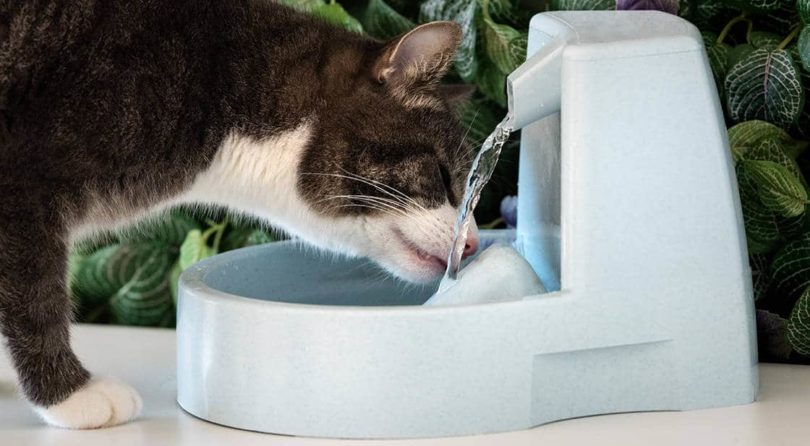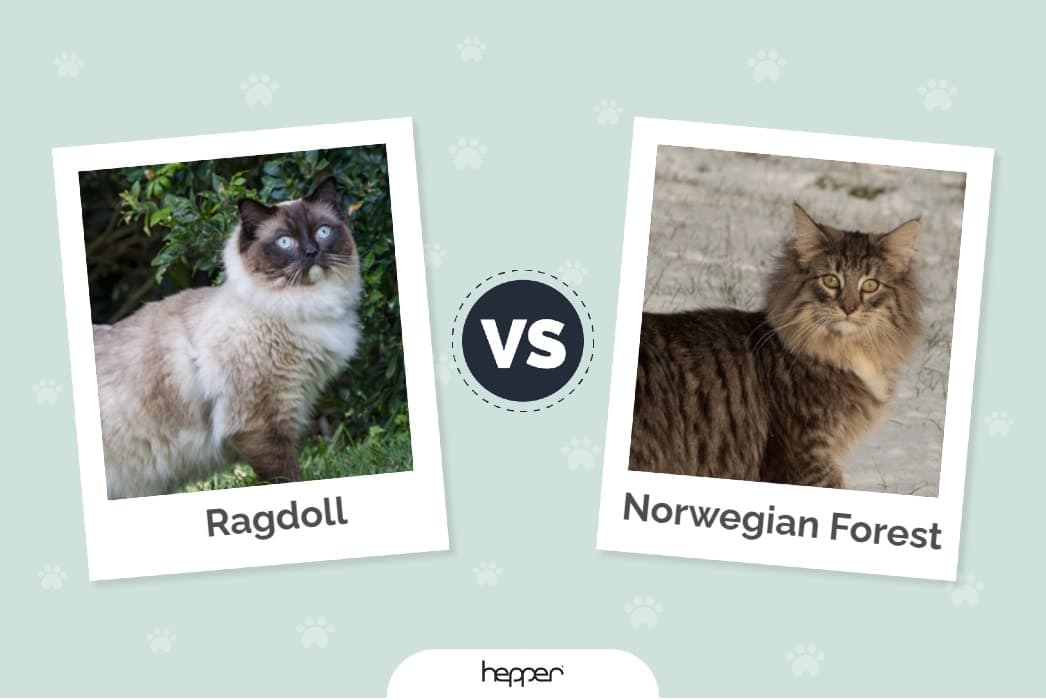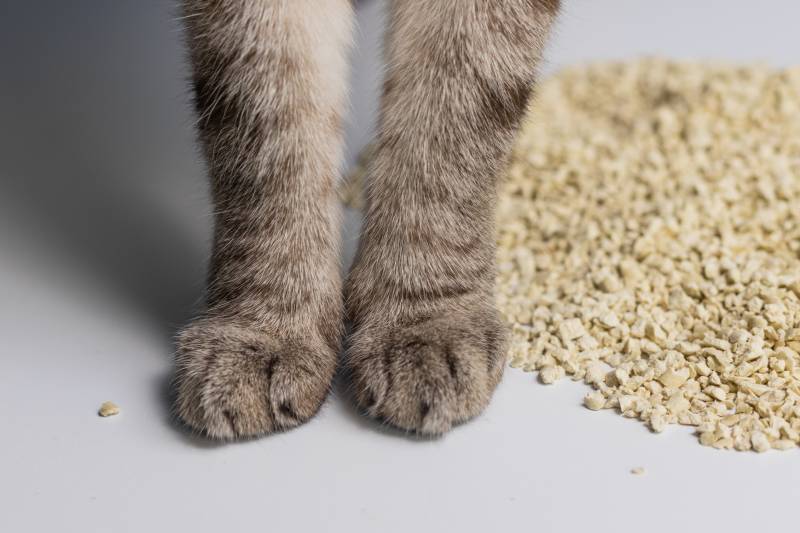Why Does My Cat Have Dandruff? 8 Vet-Reviewed Possible Reasons

Updated on
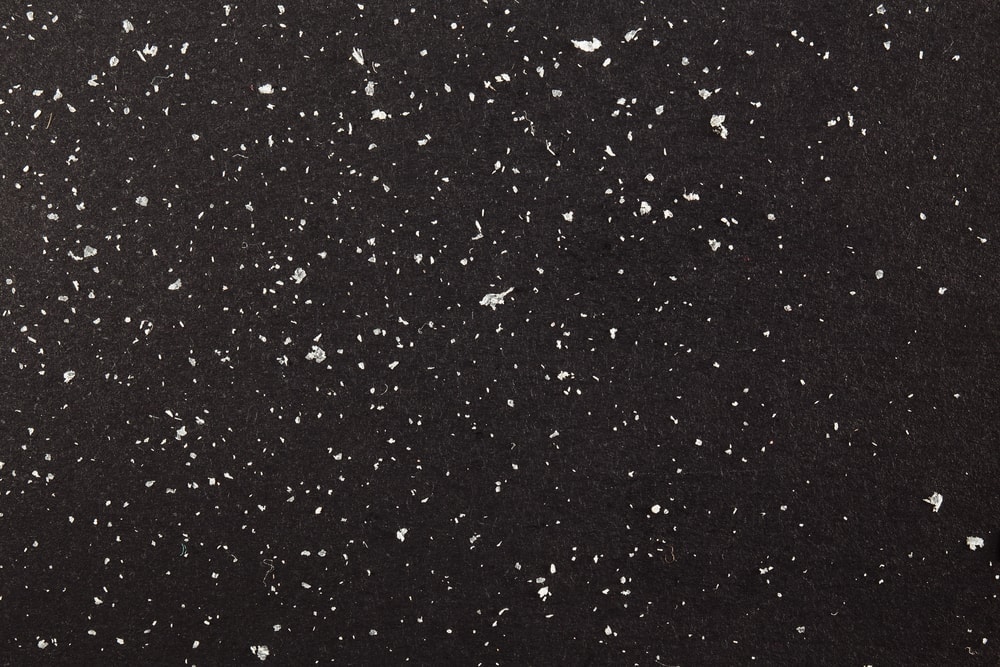
Click to Skip Ahead
Dandruff is probably something we’ve all had to deal with at some time in our lives. The uncomfortable, itchy, and sometimes very noticeable skin condition can affect cats and cause flakes of skin to appear in their fur. This is especially noticeable in black cats. But why does dandruff occur? We’re going to look at eight reasons why dandruff in cats can occur, as well as what can be done to return your cat’s coat and skin to their best.
 What is Dandruff?
What is Dandruff?
Dandruff is a condition in which the top layer of skin gets flaky, eventually falling into the surrounding hairs. It’s usually only a mildly irritating condition, but some cats find it incredibly stressful, and it can be hard to manage in some cases. Dandruff flakes can appear white, grey, or yellow in the hair and be especially evident around the head, neck, and shoulders. Dandruff can be caused by dry or greasy skin.
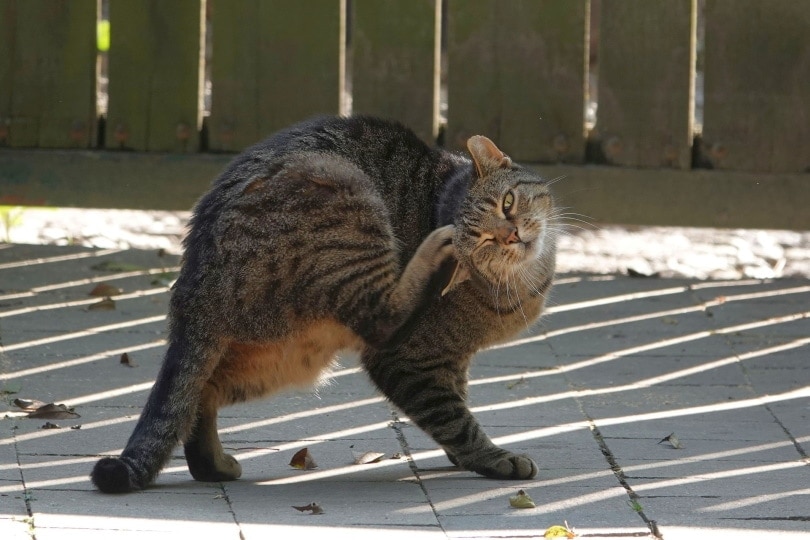
The 8 Possible Reasons Why Your Cat Has Dandruff
Dry Skin Dandruff Causes
1. Low Humidity
Dry air and cold weather can cause dandruff in cats. In the colder months, there is less humidity in the air, meaning moisture is drawn from the top layer of your cat’s skin and causes it to dry out, eventually flaking off.
Heaters can also dry the skin out. It’s the same even in warmer weather; if the air is dry enough, a cat’s skin will not be able to retain moisture. Some ways to combat this include installing a humidifier in the home and supplementing your cat’s diet with fish oil (rich in omega-3 and omega-6).
2. Low-Fat Diet
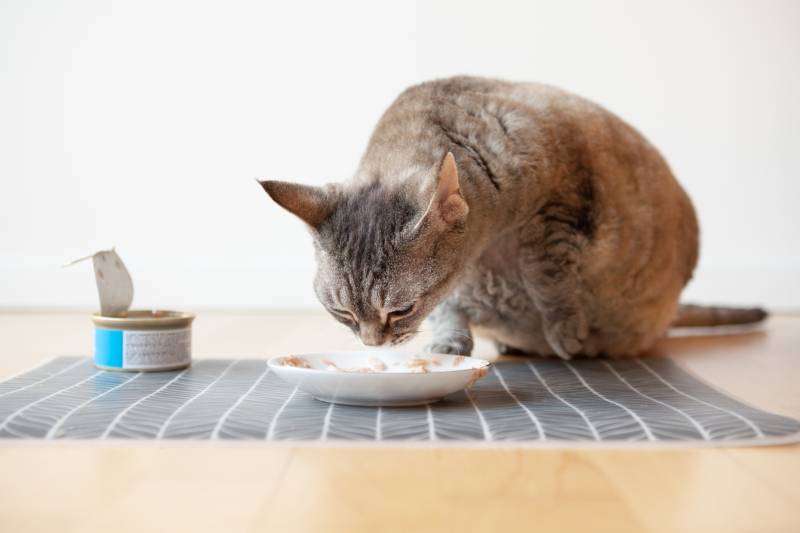
A low-fat diet is not a direct cause of dandruff in cats. However, a diet low in essential fatty acids, such as omega-3 and omega-6, may contribute to dry skin and dandruff. Omega-3 and omega-6 are important sources of essential nutrients such as EPA and DHA, which maintain the skin and coat and have anti-inflammatory properties.
3. Allergies
Allergies can cause dandruff in cats, but dandruff isn’t usually the only symptom of an allergy. Allergies cause dandruff by initiating an immune response from the cat’s immune system. If your cat comes into contact with an allergen, this immune response can cause its skin to dry out and flake off. If you think your cat could be having an allergic reaction causing dandruff, keep a diary of possible exposures to allergens to take to your vet. Common allergens include:
- Food allergies
- Shampoos or topical treatments
- Dust or environmental triggers
4. Malnutrition
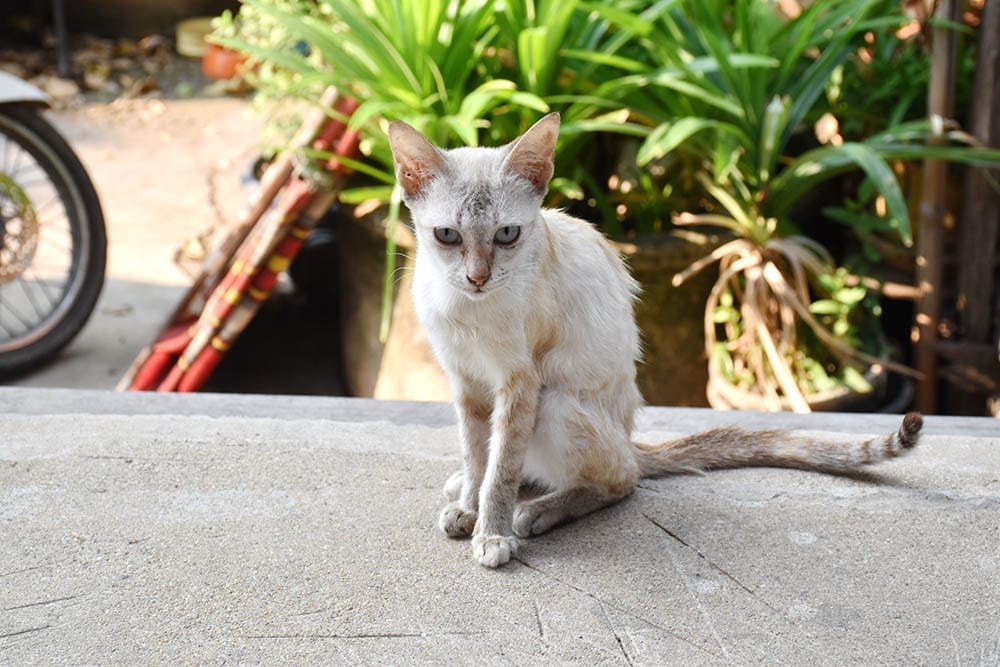
If your cat doesn’t have a well-rounded, nutritionally balanced diet, it can begin to suffer from malnutrition. A lack of vitamins, minerals, and fats in the diet can cause the skin to become dry, eventually causing the top layer to flake off as dandruff.
Additionally, malnutrition can affect the immune system. This means your cat can’t fight off potential skin infections as quickly, potentially causing dandruff.
5. Skin Infections
Skin infections can be a cause of dandruff in cats. However, they usually show other signs. For example, skin infections such as Malassezia (yeast) and mites can cause dry, flaking skin and dandruff in cats. Signs such as intense itching, redness, and skin irritation are usually also present.
If you believe your cat may be suffering from a skin infection, it’s crucial to take them to the vet as soon as possible. Skin infections may get worse, and it’s particularly important to get them treated sooner rather than later if they are immunocompromised (such as if they’re FIV positive).
 Greasy Skin Dandruff Causes
Greasy Skin Dandruff Causes
6. Obesity
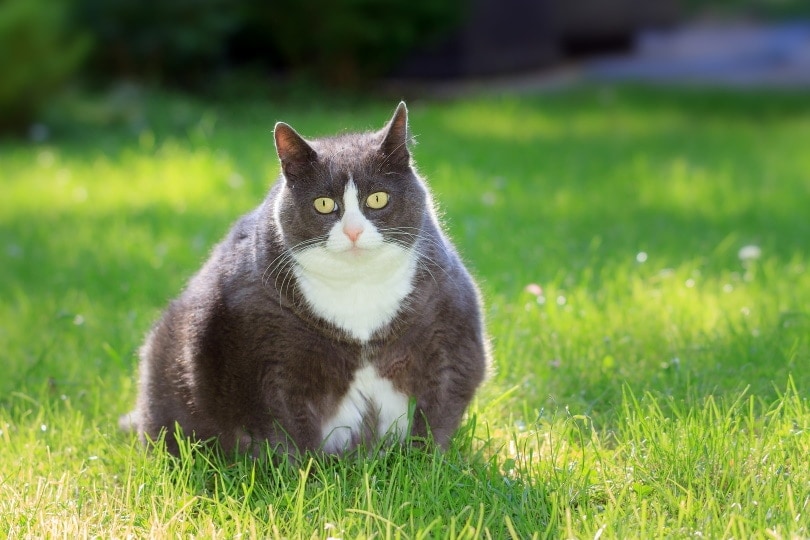
It might seem simple, but if a cat cannot groom itself, it will suffer a build-up of oils on the skin and through the coat. Obesity is a major cause of dandruff in cats; cats that are so overweight that they can’t groom themselves properly (a sad reality for over 33% of cats in the US) will suffer from uncomfortable dandruff, alongside other debilitating health problems.
A common place to see dandruff in obese cats is on the back and base of the tail, as obese cats cannot physically reach the areas due to excess fat on their bodies.
7. Build Up of Undercoat
If your cat cannot remove their undercoat and clean it well enough, it will become greasy, and a build-up of skin, hair, and oils will begin to flake into the coat. Cats have an overcoat of guard hairs that protect the undercoat and a soft layer of fur closer to the skin (the undercoat). Long-haired cats often need help to effectively groom their undercoat, as well as cats with conditions that are painful (such as arthritis).
8. Hyperthyroidism
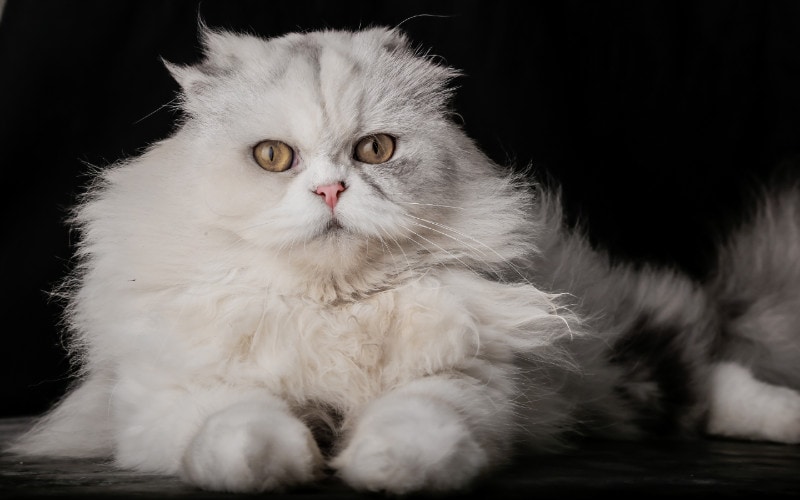
Hyperthyroidism is a prevalent condition, particularly in older cats. It involves the excess production of thyroid hormones, leading to hormonal imbalances. These changes affect the skin and coat of the cat, leading to a swift cell turnaround. The skin will dry and flake off quicker, leading to dandruff. Hyperthyroidism also affects the coat, making it dull and prone to shedding. Hyperthyroidism usually presents other signs alongside skin and coat changes, which can include:
- Excessive vocalizing
- Weight loss
- Increased appetite
- Changes in toileting habits
If you suspect your cat is suffering from hyperthyroidism, it’s essential to get them checked over by your vet. Hyperthyroidism is treatable, and vets often treat the disease with drugs or dietary changes.
 How is Dandruff Treated?
How is Dandruff Treated?
The treatment for your cat’s dandruff will depend on its underlying cause. For example, if their dandruff is due to malnutrition, treatment may involve improving the cat’s diet or beginning supplements. For skin infections, a vet can prescribe antibiotics or other medications like anti-parasitic drugs, depending on what’s causing the infection.
If the dandruff is due to a hormonal imbalance (such as hyperthyroidism), treatment usually involves medications to regulate hormones alongside close monitoring. Finally, if the dandruff is due to allergies or environmental factors, identifying and eliminating the trigger is the key to treatment and using medications or other therapies to manage the allergic reaction.
Along with treating the underlying cause, your vet can prescribe different medications to keep your cat comfortable and improve the look of their dandruff. Topical creams, ointments, or shampoos designed to ease discomfort and reduce visible dandruff are available and are effective.
 In Conclusion
In Conclusion
Dandruff in cats can look worse than it feels, but it is still uncomfortable and can cause itching and stress. Diseases that affect the skin, such as hormone imbalances or a poor diet, can cause dandruff in cats. The buildup of fur or sebum on the skin can also cause dandruff flakes, and it’s sometimes caused by environmental factors such as dry air or allergies. Taking your cat to the vet if you spot dandruff is the key to treating it since the flakes may signal that something else is happening with your feline friend.
Featured Image Credit: Goncharov_Artem, Shutterstock

 What is Dandruff?
What is Dandruff?
